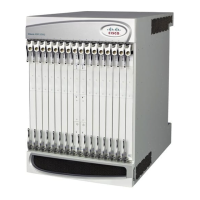Features and Functionality ▀
Cisco ASR 5000 Series Product Overview ▄
Features and Functionality
This section describes the features and functions supported by the PDG/TTG software.
The following features are supported and described in this section:
PDG Service
TTG Mode
IKEv2 and IP Security (IPSec) Encryption
Multiple Digital Certificate Selection Based on APN
Subscriber Traffic Policing for IPSec Access
DSCP Marking for IPSec Access
WLAN Access Control
RADIUS and Diameter Support
EAP Fast Re-authentication Support
Pseudonym NAI Support
Multiple APN Support for IPSec Access
Lawful Intercept
IMS Emergency Call Handling
IPSec Session Recovery Support
Congestion Control
Bulk Statistics
Threshold Crossing Alerts
PDG Service
The PDG service provides both PDG and TTG functionality, operating in either PDG mode or TTG mode. The PDG
service enables the UEs in the WLAN to connect with the core network elements via a secure IPSec interface.
During configuration, you create the PDG service in a PDG context, which is a routing domain on the ASR 5000. PDG
context and service configuration includes the following main steps:
Configure the IPv4 address for the service: This is the IP address of the TTG to which the UEs in the WLAN
attempt to connect, sending IKEv2 messages to this address to establish IPSec tunnels.

